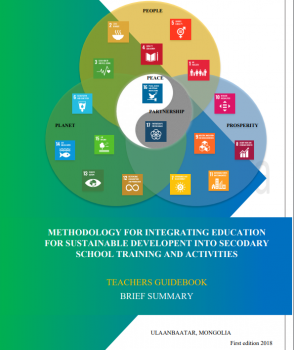
Methodology for integrating education for sustainable development into secondary school training and activities (Teachers guidebook)
ТАНИЛЦУУЛГА
Since 1972, many types and numbers of documents, such as declarations, policies, strategies, frameworks, and programs on the sustainable development and education for sustainable development (ESD) have been developed and ratified by the united organizations of the world. Nations have implemented these as general guidelines for developing their countries’ education, which has led to significant progress and created experiences and values not only in those countries but in the whole world. In the beginning, time frames between the ratification of the documents were relatively far apart from one document to another. Since in 2015 United Nations (UN) assembly has ratified the “Transforming our world: the 2030 Agenda for Sustainable development” and set up the 17 sustainable development goals (SDG), the process tend to accelerate in quicker motion. For instance, between 2015-2017, UNESCO has ratified several important documents defining concepts and methodological solutions that shall transform education as a whole.
The concept of SD, ESD is becoming more unified in the world, the operation speed is getting accelerated, cooperation at all levels of policy, strategy, and its implementation is becoming deeper integrated, which lead to synergetic results. Today, countries are adjusting their policy, strategy, and its implementation and monitoring structure for integrating ESD in education for all (EFA) complying with the education development visions identified in “SDG4-Education 2030 Framework for Action”. Countries are accelerating the transformation process for education, focusing on and investing in on improving teacher skills, creating a learning environment according to ESD criteria.